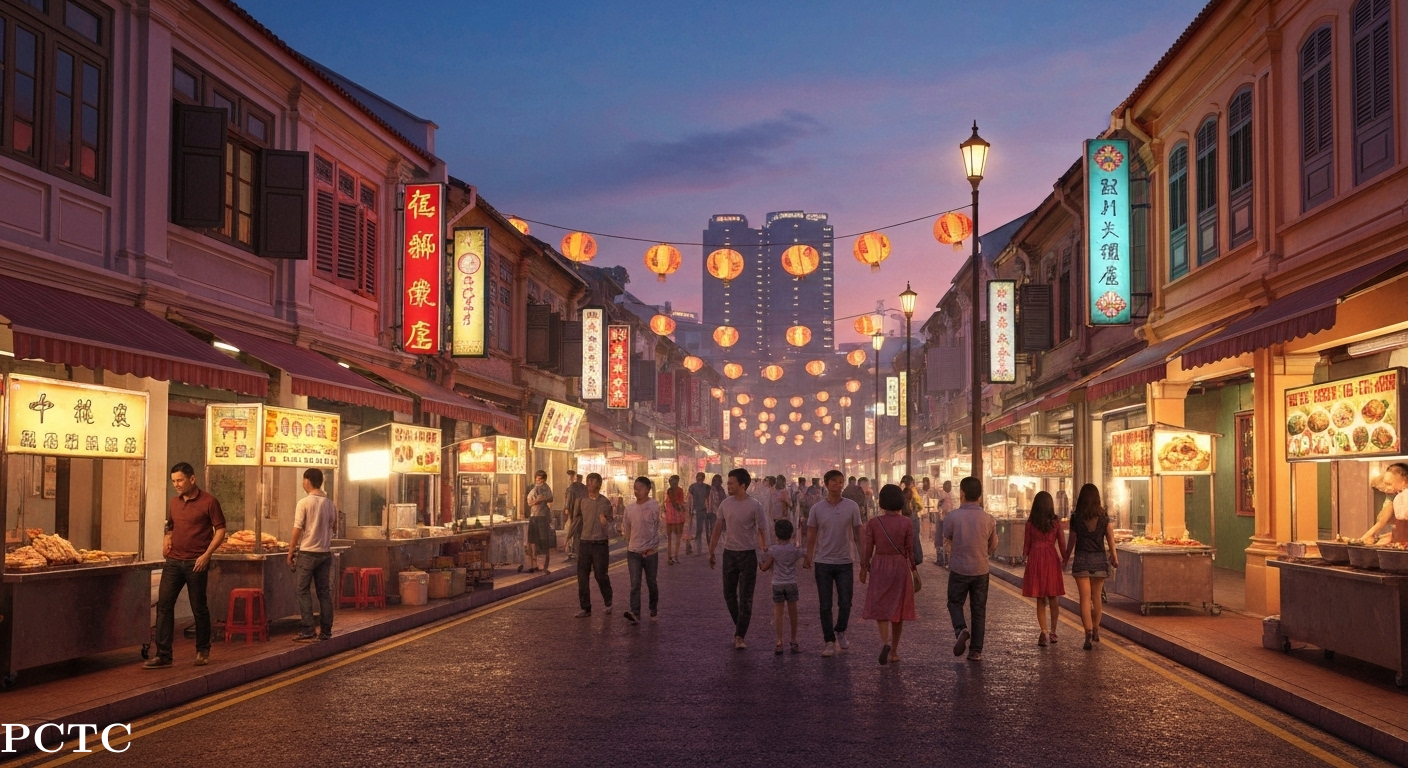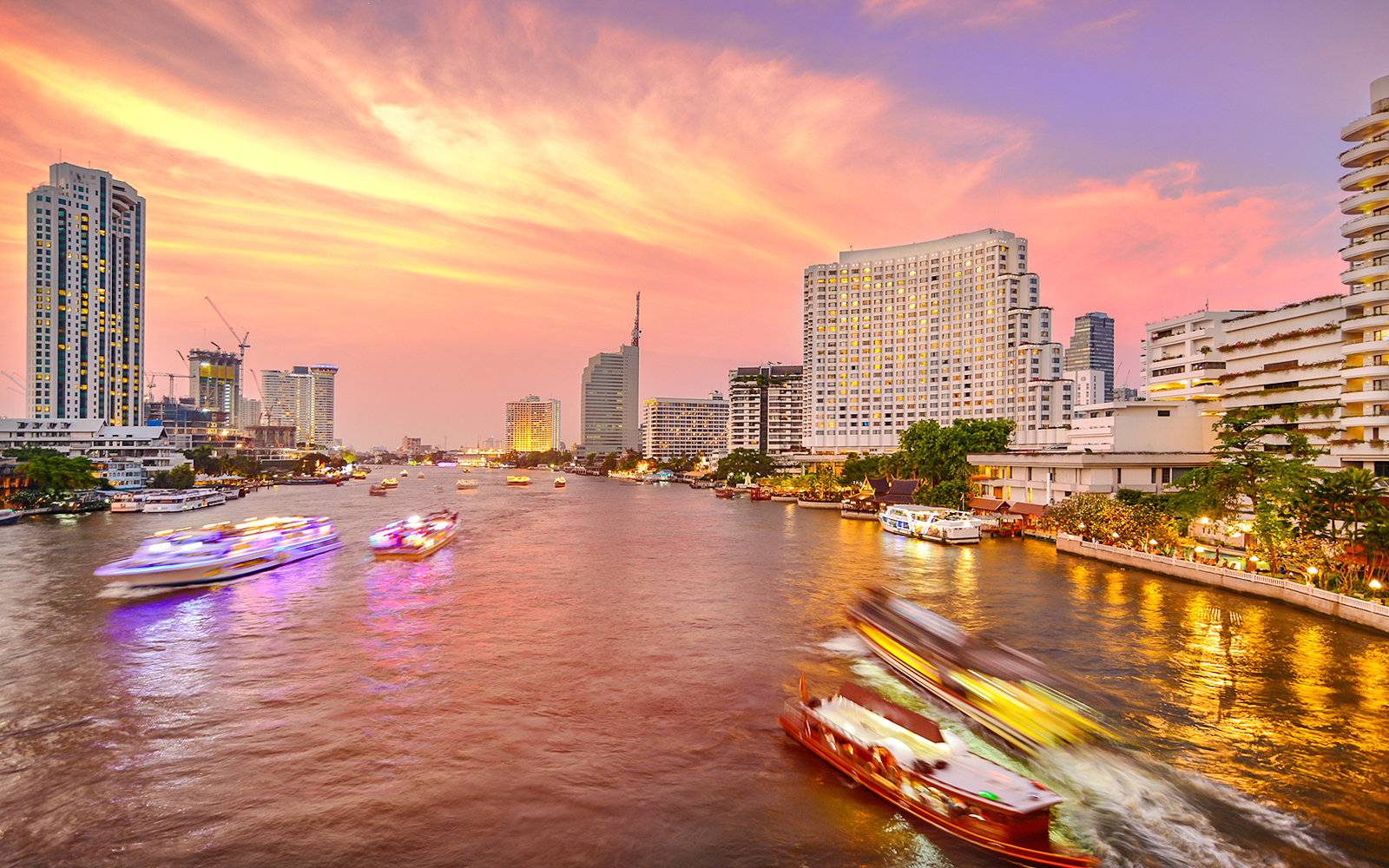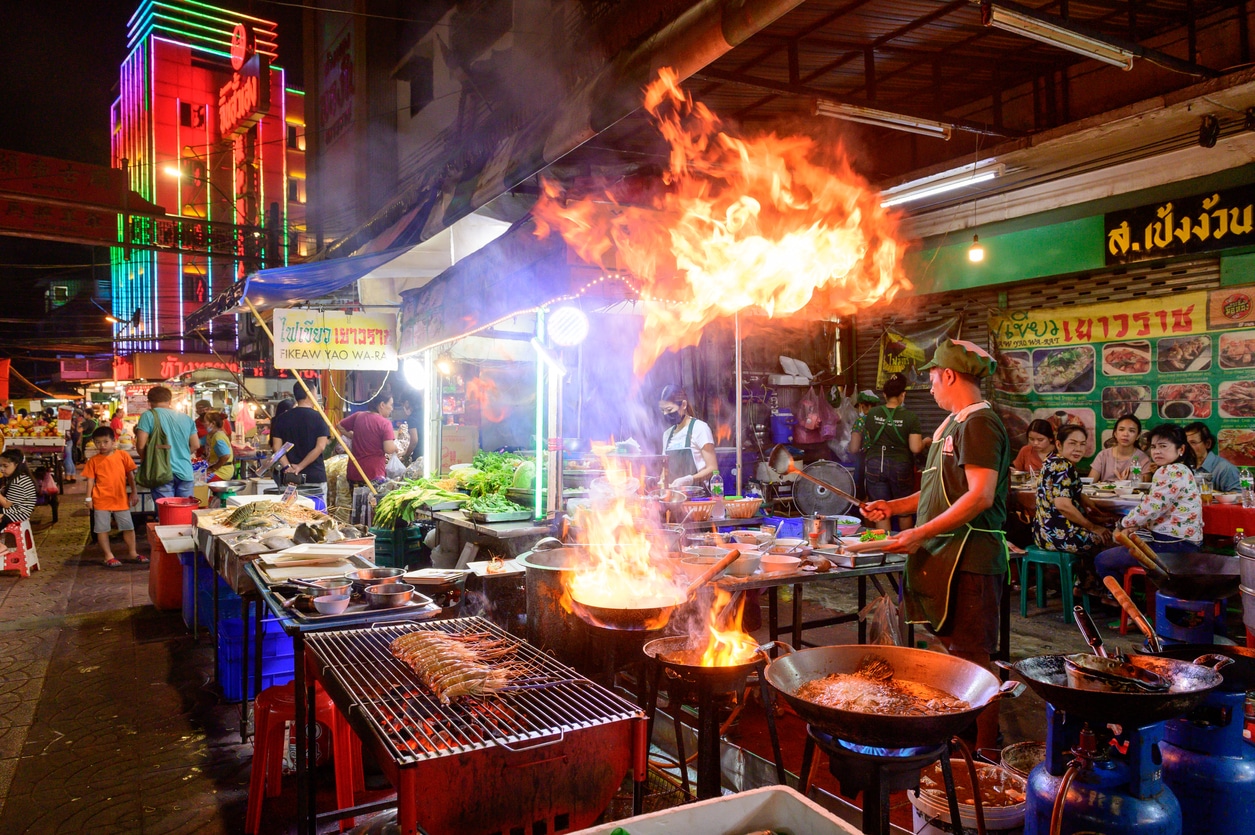
Discover the Hidden Gems of Chinatown Bangkok: A Guide
It is often said that upon entering Bangkok's Chinatown, one is stepped into the center of life in one of Thailand's most colorful and exciting areas; Yaowarat for short. Here, timeworn traditions of the Chinese community coexist with Thai culture. Vendors are selling street food; sumptuous goods are sizzling on the grill. Old temples sidled away in narrow alleys are calling for discovery. In Bangkok's Chinatown, one truly feels wrapped in this city's embrace of the old with the new. Prepare to meander through these winding streets, where sights, smells, and tastes will engrave into your memory many a time before you leave.
Unveiling the Magic of Chinatown, Bangkok
The central allure of Bangkok's Chinatown is the lively atmosphere. As you walk into the area, you feel the presence of a bustling crowd and the corresponding noise from myriad vendors. The spicy smells float all around in the air, and bright neon colours can be seen at every corner. This corner of Chinatown in Bangkok is a place of surprise for every direction you look at; at every curve you want to walk, and every corner you want to roam around without a plan.
Built around Yaowarat Road, this is where Chinatown really originates. The road itself seems to spill over with people, both day and night, busy themselves with looking for things to eat or just strolling along the streets. Numbered among the essential things to do in the city is walking Yaowarat Road and the many lanes adjoining it. This place is legendary for its very rich culture and foods that deserve mention. You will read about the history and main sites to see when you visit this fascinating and amazing part of Bangkok.

Why Chinatown Bangkok Captivates Travelers
Bangkok Chinatown is truly a different world in its own right and draws the most people compared to other parts of the city. It is celebrated as one of the largest and most realistic Chinatowns in the parts of Southeast Asia. This is the place where you will have the intrinsic culture experience, meaning people will always find life in the streets and open spaces in Bangkok's Chinatown. There's a wide sidewalk of vendors and food stalls along the streets, and big crowds keep the area full of energy all the time.
It is evident in most of its architecture, including temples and food enjoyed by people, how deep-rooted the Chinese community is in Thailand. The beautiful blend of cultures is what makes the place lively and alive with history. In every corner, then, the vibe of the past and the present is interfused.
Bangkok Chinatown would be irresistible to anyone who loves to travel. Enter the narrow streets, and you would find so many discoverable things out there. Some temples seem ancient and authentic. You can bite into the food prepared by generations in their family kitchens. A trip to Bangkok's Chinatown is one that is sure never to be forgotten; it rouses the senses and brings you into the rich, dark history and life of the city.
The Historic Heart – Yaowarat Road’s Significance
Yaowarat Road is not simply a street; it is also the heart and soul component of Chinatown. This area grew up in 1782. The sparse Chinese traders came here when they had to move from their old area due to this Grand Palace overhead. The consensus has it that the road twists and turns like a dragon's body. Among the myths and beliefs, dragons in Chinese culture mean good luck and wealth. This shape was purposely selected, denoting the strong culture of the group who created Yaowarat Road and call this area their home.

This area in Bangkok was once a flourishing hub of commerce where Chinese Indians conducted a flourishing business dealing in trade assets. Though Yaowarat Road experiences change over the years, it retains its garland and uniqueness. Today, this place has a global reference for the bright neon signs glowing at night and being the best street food place one can imagine. Yaowarat brings in many people who want to see the lights while tasting some of the finest food around.
This road is the principal part where most of the people start to explore Chinatown. No matter if you want to find good food, look for gold, or just feel it here, you will end up on Yaowarat Road. The place is alive, full of memories, history, and life. Most excursions into Chinatown end along this busy and pulsating colourful road called Yaowarat.
What to Know Before Exploring Chinatown, Bangkok
Preparation for the wonderful adventure that awaits you in Bangkok Chinatown is essential. The pace of life in this area of Bangkok, Thailand, takes on different meanings. Arriving with a few facts under your belt will surely make one less bewildered upon arrival in Chinatown. You will also see some action, pick out favourable visiting periods, and generally feel good about it. With these details taken care of, the trip will certainly be smoother and a lot more fun.
Being prepared thus helps you savour all the sights and sounds in Chinatown peacefully. The following sections contain useful tips regarding local etiquette, the best seasons to visit, and special events to be on the lookout for. These tips will turn your time in Chinatown into something you and your friends will look back on with cherished memories for the right reasons.
Cultural Etiquette and Practical Tips for Visitors
Going to Chinatown is helpful to respect the local culture for a better visit. This will definitely help you enjoy your visit, and people there will appreciate it as well. You may be among tourists in the country, but it is nice to follow the local ways. For instance, if you go to temples, wear something that covers your shoulders and knees. This is to show respect.
At the heart of it, however, are the jostling markets. There, all the vendors will be doing their thing to make a living. Some haggling will be okay with places like Sampeng Lane Market. However, it has to be done with a smile and with respect. Have to be relaxed because it's going to be crowded on the streets and in the alleys.
Best Times to Visit and Seasonal Events
Chinatown at any given time can change the sights and activities in the place. In the daytime, these markets are full and busy and, during late afternoons and evenings, things start to get really lively. If you're planning a visit, around 4:00 PM is the best time to arrive. You still get to ambulate around the temples and markets just before they close, but at the same time, you also catch the street-food scene beginning to get lively. Visiting Chinatown in the evening allows you to enjoy the best street food and remind you that this area has a lot of energy.

With the sun all the way down, Yaowarat Road is always transforming. Neon signs are lit, and the street is filled with more and more lights. Food vendors are busy setting up those plastic tables and chairs, ready for the night. Energy brought the whole place alive. That is why evening time is the best time for food lovers to visit. It should be remembered not to visit on Mondays, though, as this is the cleaning day for streets in Bangkok: here, Yaowarat will have far fewerfood stalls set up compared to other nights and therefore be much less worth it to eat out on.
What You’ll Need to Get Started
Comfort is number one on your checklist for a great stay in Chinatown. The place is hot and always packed. You will definitely walk a lot, so be prepared. You do not have to overload your bag with all that you think you might need over the day. A few essentials are all that's needed to keep you comfortable on your trip.
You need to think primarily about comfort and ease. You will be walking a lot in tight, crowded streets. For this reason, it is what you wear and what you take with you that count. The idea should be going place to place quickly and feeling good about everything sight, sound, and smell. Don't be bringing anything around that feels like it is holding you back or weighing you down.
Step-by-Step Guide to Discovering Chinatown’s Hidden Gems
Are you ready to discover the hidden gems of Chinatown that most people overlook? This practical little guide will have you wandering the streets and immersing yourself in the neighbourhood's real vibe. Follow these tips for a solid plan for your Chinatown experience, but expect some surprises along the way.
The guide will assist you right from the moment you arrive at Chinatown in Bangkok so as to feel at home. You will witness everything from sightseeing to chomping on some of the most mouth-watering street foods on offer. Let us begin the journey of exploring why Chinatown is famous! Here is your chance to savour the dining, walking, and lingering that this buzzing Bangkok area has to offer.
Step 1: Arriving and Orienting Yourself in Chinatown
Home for your adventure is Chinatown. The most convenient way to get there is by using the MRT going to Wat Mangkon station. Once you get off, you are literally in the heart of Chinatown. Yaowarat Road is only a stone's throw away from there. It takes you to Wat Mangkon, where you can travel conveniently without having to experience that famous Bangkok traffic. From there, you would have arrived within minutes to Yaowarat and all the wonderful things that it has to offer.

The Chao Phraya River Express Boat is another interesting alternative to reach Yaowarat Road. One can get off the boat at Ratchawong Pier, and from here, Yaowarat Road is just an eight-minute walk away. An excellent way to riverside enjoy a different view of Bangkok as seen from the Chao Phraya River. Taxis and tuk-tuks get to Yaowarat, but you're best advised to know that they tend to end up in a lot of traffic jams at some busy parts of the day.
Step 2: Mapping Out Must-Visit Streets and Alleys
Once you get to Bangkok, you should know what street offers the best sights. It is good to stroll about aimlessly sometimes, but some foreknowledge can mean the difference between finding your way to the main tourist attractions or missing them completely. Concentrate on the best-known areas for the most time; each of them has something new to offer.

Start your journey on beautiful Yaowarat Road, packed with food and neon lights. The daytime sees the street alive with crowds and shops, with the night showing off the light and life of a massive food market. Then explore the narrow alleys near Yaowarat Road. They feel quiet and deserted compared to the main street, alive with noise.
Step 3: Immersing Yourself in Local Markets and Shops
After all, no visit to Chinatown can be complete without a wander through its busy markets. This is where you can really feel the pulse of the place. The markets in Chinatown are busy, loud, and alive. A lot is going on. From wholesale goods to exotic spices, you will find it all. Be prepared to squeeze through narrow spaces. After all, one may bump into persons shopping for their day-to-day needs.
Each market had its own ambiance and products to sell. Sampeng Lane is a busy street full of energy. This market is perfect for clothing, cool accessories, and gadgets. The colorful crowds twisting and turning through the stalls fill the air with sounds. A short walk away, you will arrive at Phahurat Market. Here, you enter the heart of Little India, filled with the rich aroma of spices and shops with rows of vibrant fabrics.
Step 4: Tasting Street Food and Unique Culinary Experiences
Next in line comes the best bit about visiting Chinatown: the food. Anyone who enjoys street food would surely feel comfortable in Yaowarat Road. You find many different kinds of dishes here that are not open anywhere else in Bangkok. When night falls, the sidewalks become a big open food space. Many vendors will be having street-side food stalls, serving many tasty delights at this bustling crossroad of Yaowarat.

Cuisine here is a blend of the Chinese and Thai flavors. From seafood to noodle dishes, they have it all. Desserts can also be found. For you to enjoy the food offerings to their full potential, you must be adventurous. Start small; that way, you can sample more. If you see a long line at a stall, don't hesitate; it signifies good food.
Step 5: Exploring Temples, Heritage Buildings, and Cultural Spots
Chinatown is alive with food and busy markets, but it is so much more than that. What Chinatown has are quite a number of cultural and historical spots that manage to maintain serenity except for being crowded. Such places teach about the people, their background, and the way their beliefs function. Dedication to taking time out to visit such sites will surely see a relation made between an individual and Chinatown as one is conversed with a different part of the neighborhood.
Chinatown temples are not just tourist spots. They serve as places for worship to the people who really come here to pray and exercise their faith. Walking inside, incense pervades the air, and you notice pretty buildings. These peaceful spots give a little time away and make a quiet contemplation possible, even with the busy life just outside.
Do visit these important places of culture:
Wat Traimit (Temple of the Golden Buddha): Houses the largest gold Buddha statue in the world. The temple stands close to Chinatown Gate, and should serve as a must-see spot for anyone touring this area in Bangkok.

Wat Mangkon Kamalawat (Dragon Lotus Temple): Wat Mangkon is the biggest and most popular Chinese temple in Bangkok. An interesting temple to visit because of its exciting festivities and very detailed architecture, portraying its history and culture.

Exploring Iconic Landmarks and Cultural Experiences
You can get some good food on the streets of Chinatown, but there is much more to see or learn from the place-it has its good landmark attractions and ingrained history with culture. To know Chinatown really well, visit sites that have been a part of its historical moments and those that talk about its people. You will find, through those estates, the palpable spirit and visage of the place.
Every such place-from the magnificence of the primary temple to the tranquil character of an old mansion-gives you the reflection of its past and present. The next section talks about some of the very few cultural things that one can see and do here. They are the chinatown experiences you would not want to miss on your trip.
Top Markets and Unique Shops in Chinatown, Bangkok
The shopping feel in Bangkok's Chinatown is very lively, much like the area’s food. This place is known for busy markets and one-of-a-kind shops. Here, you can find things from cheap deals to hard-to-find old items. You will not see modern malls in Chinatown, Bangkok. Instead, shopping here takes you through small walkways and old buildings. It is always an adventure.
If you want to buy souvenirs, see some fabrics, or just watch how busy people get with buying things, you should visit the markets in Chinatown. You will find the next sections helpful to know where to get the best deals and special items that you cannot find anywhere else.
Conclusion
Chinatown is among the most radiant wakes of life going amidst business traffic, sights, food, and history. It feels beautiful to walk down Yaowarat, keeping street foods amongst numerous local and foreign tourists thrown wide open by the entire Chinatown living scene.
Our goal is to give you an experience of local hideaways, affording you with a knowledge of cultures, and the other 'hidden' tips of wisdom. From the old places of attraction to markets alive with all thumping of life-'Chinatown is where it all takes place regardless of the hour or day.' Take a free map and be lost in the noise of streets across Chinatown for a lifetime's worth of experience. There is still so much to see everywhere in Chinatown, primarily along Yaowarat Road. So instead of keeping away, step out there and discover with the people whatever they do and spend all the moments you have here.
